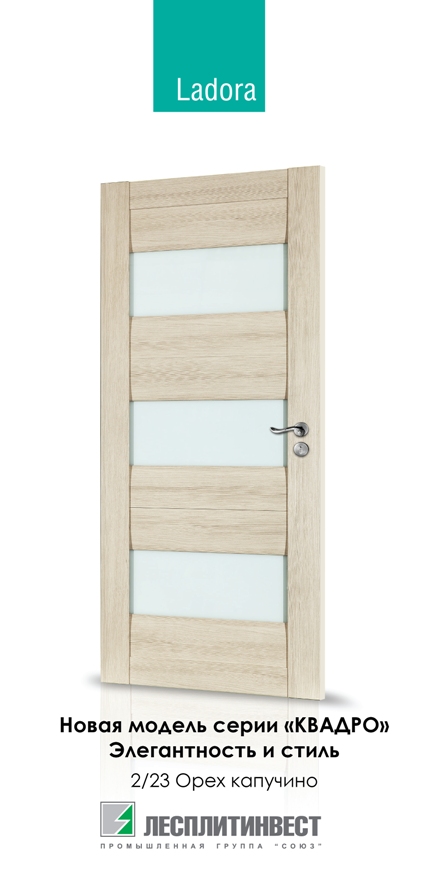Specification
ТУ 5536-022-0273643-95
Format,mm
Basic: 2440х1830
Additional: 2070х1830, 2250х1830, 2150х1830, 2150х1650,2800х1220,2440х1220
Thickness, mm: 8, 10, 12, 14, 16, 18, 22, 24, 25, 30
Types: 1, 2.
Density – minimum 840kg/m3. Moisture content: 6.5 ± 2.5%.
Use:
- for making cabinet,
- kitchen and office furniture,
- non-standard furniture and commercial equipment,
- for making furniture facades,
- for making furniture mouldings,
- for making separation doors,
- for making door mouldings,
- for making construction mouldings.
Advantages of MDF:
- possibility of milling and embossing,
- high tensile strength and moisture resistance,
- ideal surface quality,
- even thickness,
- no internal or external defects,
- resistance to temperature fluctuations,
- possibility of various finishes (coating with lacquer and paint, veneer, plastic, PVC film et.),
- ighly eco-friendly.
Description of types of MDF:
ТУ 5536-022-0273643-95
|
Defect description |
Type 1 |
Type 2 |
|
Dent (extrusion) |
None permissible |
Permissible to have 2 pieces per 1m2 of depth up to 0.3mm and a diameter of up to 10mm. |
|
Scratch |
None permissible |
Permissible to have 5 scratches per 1m2 of length up to 200mm. |
|
Stratification |
None permissible | |
|
Resin stain |
Permissible only one stain per 1m2 of area of area no greater than 200mm2 |
Permissible only one stain per 1m2 of area of area no greater than 100mm2 |
|
Rupture of edge or corner |
Permissible within the limits of lengthwise or width wise tolerance of the board (± 5 мм) | |
|
Grinding defects |
None permissible |
Not permissible if exceeds 10% of the surface area of the board. |
Packing and marking:
MDF boards are packed in bundles (with an underlay on the bottom of sheet and carton sheet on top of the board), tied with strong plastic packing ribbon (tape). Each bundle is marked using a label.
Types of transportation:
The MDF boards are dispatched using covered railway carriages and trucks (pickup).
Supplementary services:
We offer the following services billed subsequently: issuance of CT1 certificates and form A for export.
Norms of MDF loading:
For format 2440x1830mm:
|
Thickness, mm |
Sheet |
Pack |
Euro wagon |
Train wagon | |||||||||||
|
м2 |
м3 |
kg |
sheet, pcs. |
м2 |
м3 |
kg |
pack, pcs. |
м2 |
м3 |
kg |
pack, pcs. |
м2 |
м3 |
kg | |
|
10 |
4,4652 |
0,0447 |
37 |
50 |
223,26 |
2,233 |
1904 |
10 |
2233 |
22,3 |
19040 |
32 |
7144 |
71,4 |
55000 |
|
16 |
4,4652 |
0,0714 |
59 |
30 |
133,96 |
2,143 |
1875 |
11 |
1473 |
23,6 |
18750 |
32 |
4286 |
68,6 |
56000 |
|
18 |
4,4652 |
0,0804 |
66 |
30 |
133,96 |
2,411 |
2109 |
10 |
1334 |
24,0 |
21000 |
32 |
4286 |
77,2 |
60000 |
|
22 |
4,4652 |
0,0982 |
78 |
23 |
111,63 |
2,259 |
2095 |
10 |
1119 |
22,5 |
18500 |
32 |
3286 |
72,3 |
59000 |
|
24 |
4,4652 |
0,1072 |
85 |
20 |
89,30 |
2,143 |
1863 |
11 |
982 |
23,6 |
20493 |
32 |
2857 |
68,6 |
56000 |
|
30 |
4,4652 |
0,1340 |
106 |
18 |
66,98 |
2,411 |
1799 |
10 |
803 |
24,1 |
19789 |
32 |
2571 |
77,2 |
60000 |
! the quantities can exceed the set norms if agreed upon with the client.
Recommendations on how to store and secure MDF:
- The warehouse should be well ventilated, with relative humidity from 45 to 75% at temperatures ranging from +10 to +40 OC.
- Cover the raw or wet floor with polyethylene spread to avoid the seepage of moisture into MDF boards.
- Cover the bundles from top and bottom to avoid the influence of climatic events and other environmental hazards. Also cover the board edges with protective coating to protect MDF against the effects of moisture and heat.
- Store the sheets horizontally, but in case of vertical storage of small amounts of sheets make sure the sheets are strictly vertical and standing firm.
- Store the sheets exactly matched to edges with each other to avoid damage to edges and rupture of corners.
- The maximum height of stacked bundles should not exceed 4.5 m and the bundles should be separated using pads.
- The bottom bundle should be placed on an even footing on spacer-pads or palettes.
- Even thickness spacers should be placed perpendicularly on the bundles (the spacer thickness and width should be at least 80 mm; the tolerance of spacer thickness used for padding a single bundle of sheets, should not be more than 5mm).
- The difference between the spacers should not be more than 600m, with distance of starting and ending spacer from the edge of the bundle not exceeding 200mm (the number of spacers should not be less than 3). For thinner sheets the distance between the spacers can be less than the aforementioned.
- Levelling the spacer placement vertically (the spacers, which separate the bundles from each other, must be placed in a single vertical plain, strictly inline with the spacer above it and below it).



